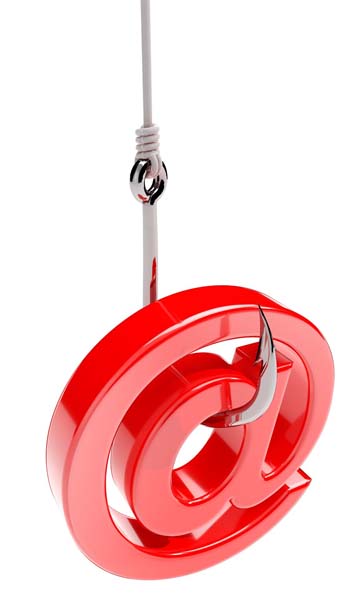Phishing emails
A link in the email would take you to a website that may look exactly like the original site but is actually a carefully designed fake intended to trick you into giving away personal information.
Although the email message would look as if it were coming from a genuine source, there would be telltale signs that give it away. Fraudulent emails usually display some of the following:
![]() The sender’s email address is different from the trusted organisation’s website address. For example, instead of amazon.co.uk it may be amazon947.co.uk.
The sender’s email address is different from the trusted organisation’s website address. For example, instead of amazon.co.uk it may be amazon947.co.uk.
![]() The email is sent from a completely different address or a free
The email is sent from a completely different address or a free
![]() The email addresses you as ‘Customer’ because the sender does not know your name.
The email addresses you as ‘Customer’ because the sender does not know your name.
![]() The email expresses a sense of urgency. For example, the need to act immediately or have your account closed.
The email expresses a sense of urgency. For example, the need to act immediately or have your account closed.
![]() The entire text of the email may be contained within an image instead of the usual text format. The image would contain a link to a bogus site.
The entire text of the email may be contained within an image instead of the usual text format. The image would contain a link to a bogus site.
![]() The email message or the link requests your personal information, such as username, password or bank details. Your bank, or any other trusted company, would never request this information in an email.
The email message or the link requests your personal information, such as username, password or bank details. Your bank, or any other trusted company, would never request this information in an email.
Another sign would be that you weren’t expecting an email from the organisation that appears to have sent it. While a website link can seem very similar to the authentic address (URL), a single character difference may give away the fact that it is a fake website.
Sometimes, a fake email might have none of these characteristics because scammers take advantage of new and more effective technologies. It is not impossible to receive a fraudulent email with your name and address.
Guide: Phishing
This short animation from CPNI UK helps you spot a phishing email.
Please note: there is no audio narration.
3.2 Email scams, spam and phishing

